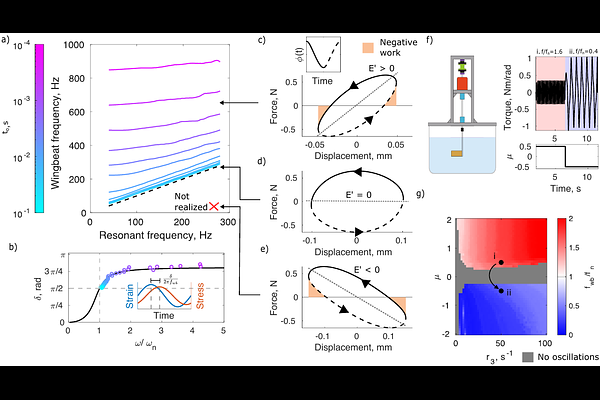Supra-resonant wingbeats in insects

Supra-resonant wingbeats in insects
Wold, E.; Yang, R.; Lynch, J.; Liu, E.; Gravish, N.; Sponberg, S.
AbstractPowering small-scale flapping flight is challenging, yet insects sustain exceptionally fast wingbeats with ease. Since insects act as tiny biomechanical resonators, tuning their wingbeat frequency to the resonant frequency of their springy thorax and wings could make them more efficient fliers. But operating at resonance poses control problems and potentially constrains wingbeat frequencies within and across species. Resonance may be particularly limiting for the many orders of insects that power flight with specialized muscles that activate in response to mechanical stretch. Here, we test whether insects operate at their resonant frequency. First, we extensively characterize bumblebees and find that they surprisingly flap well above their resonant frequency via interactions between stretch-activation and mechanical resonance. Modeling and robophysical experiments then show that resonance is actually a lower bound for rapid wingbeats in most insects because muscles only pull, not push. Supra-resonance emerges as a general principle of high-frequency flight across five orders of insects from moths to flies.